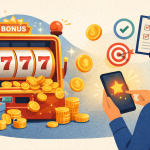In today’s digital age, webinars have emerged as a powerful marketing tool that can help businesses expand their reach, establish thought leadership, and foster stronger customer relationships. As a marketer, harnessing the potential of webinars can significantly contribute to your brand promotion, lead generation, and customer engagement efforts. This ultimate guide is designed to provide you with a comprehensive understanding of the diverse aspects of webinar planning, execution, and follow-up, enabling you to maximize the impact of this dynamic digital marketing tool.
Understanding Webinars
Webinars, or web-based seminars, are interactive online events where a presenter shares information with an audience, usually in real-time. These events can be live, pre-recorded, or a combination of both. Webinars differ from other online content in that they typically include interactive features such as Q&A sessions, polls, and chat rooms that allow for real-time communication between the presenter and the audience.
Incorporating webinars into your marketing strategy offers a myriad of benefits, including:
- Reaching a wider audience – Webinars provide an opportunity to connect with people from all around the world without the constraints of geographical limitations.
- Establishing thought leadership – By sharing valuable insights and industry knowledge, you can position yourself and your brand as experts in your field.
- Nurturing customer relationships – Webinars offer a unique opportunity to engage with your customers on a deeper level, fostering trust and loyalty.
- Cost-effectiveness – Web-based seminars are often more affordable than traditional in-person events, allowing you to reach a larger audience with a smaller budget.
Webinars are a valuable addition to any marketing strategy. By hosting webinars, you can connect with people globally, share insights and knowledge to position yourself as an expert, engage with customers, and save on budget while reaching a larger audience.
Planning a Successful Webinar
Defining Your Goals and Objectives
Before organizing a webinar for marketers, it’s essential to identify the specific goals and objectives you hope to achieve. These might include increasing brand awareness, generating leads, or enhancing customer engagement.
Identifying Your Target Audience
A critical step in planning a successful webinar involves segmenting your market and creating audience personas. This process helps ensure your webinar content resonates with the intended audience and addresses their needs and interests.
Choosing the Right Topic and Format
Select a topic that aligns with your audience’s interests and needs while also showcasing your expertise. Strive to strike a balance between educational and promotional content. Consider experimenting with different formats such as panel discussions, interviews, or presentations to keep your webinars fresh and engaging.
Selecting the Best Time and Date
To ensure maximum attendance for your webinar, it is crucial to understand your audience demographics. Analyze their location, age, and interests to determine the best time to schedule your webinar. This information can also help you to take time zones into account and schedule your webinar at a time when your audience is most likely to be available and engaged.
Additionally, consider peak engagement hours to schedule your webinar. For example, if your audience is primarily made up of working professionals, scheduling your webinar during business hours may be more convenient for them. On the other hand, if your audience consists of students or people with more flexible schedules, scheduling a webinar in the evening or on weekends may be more suitable. By taking these factors into account, you can increase the chances of having a well-attended and successful webinar.
Executing a Flawless Webinar
Preparing the Presentation
An effective presentation is visually appealing and follows a well-crafted script. Focus on creating captivating slides with concise, easy-to-read text and engaging visuals that reinforce your key messages.
Promoting Your Webinar
Utilize multiple channels to promote your webinar, including email marketing, social media, and your website. A dedicated landing page can provide potential attendees with key information and encourage registration. To entice early sign-ups, consider offering incentives such as exclusive content or discounts.
Ensuring Technical Stability
Selecting the best webinar platform is crucial to guarantee a seamless experience for your attendees. Test the platform by conducting rehearsals and addressing any technical issues that may arise. Additionally, have a contingency plan in place to handle unforeseen challenges. A robust webinar platform can help ensure a smooth and seamless webinar experience for both you and your attendees.
Engaging Your Audience During the Webinar
Keep your audience actively involved by encouraging interaction through Q&A sessions, polls, and chat features. Incorporate storytelling techniques to make your content more relatable and memorable, and maintain a lively pace throughout the presentation to hold your audience’s attention.
Following up and Measuring Success
Post-webinar Follow-up
After the webinar, send thank-you emails to all attendees and share the webinar recording and any additional materials. This not only demonstrates your appreciation but also encourages further engagement. Additionally, collect feedback from attendees to help you improve future webinars.
Analyzing Webinar Performance
Measure the success of your webinar by monitoring key performance indicators (KPIs) such as attendance rate, engagement rate, and lead generation. Analyze these metrics to identify areas for improvement and optimize future webinars.
Repurposing Webinar Content
Maximizing the reach and longevity of your webinar content is essential to ensure its continued impact. One way to achieve this is by repurposing it into different formats such as blog posts, podcasts, or infographics. This strategy allows you to reach a broader audience and reinforce your key messages. By creating different types of content, you can attract a wider range of people who prefer to consume information in different ways.
For example, you can turn your webinar into a blog post, highlighting the key takeaways and adding additional insights and images. This can help drive more traffic to your website and increase your search engine ranking. Additionally, you can create a podcast episode based on your webinar, making it more accessible for people who prefer to listen to content while on the go. Repurposing your webinar content in these ways will help to extend its reach and lifespan, increasing its overall impact and value.
Webinars have established themselves as an indispensable tool in the digital marketing landscape. By following this comprehensive guide, you can master the art of webinars and leverage their immense potential to elevate your marketing efforts. Embrace the power of webinars to reach a wider audience, solidify your position as a thought leader, and cultivate lasting customer relationships. Remember, the key to success lies in thorough planning, flawless execution, and consistent follow-up. With these elements in place, you’re well on your way to achieving your marketing objectives through the strategic use of webinars.
Lynn Martelli is an editor at Readability. She received her MFA in Creative Writing from Antioch University and has worked as an editor for over 10 years. Lynn has edited a wide variety of books, including fiction, non-fiction, memoirs, and more. In her free time, Lynn enjoys reading, writing, and spending time with her family and friends.















